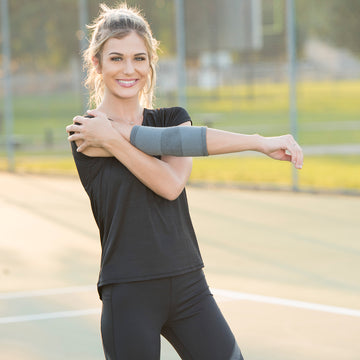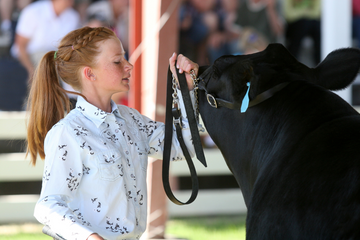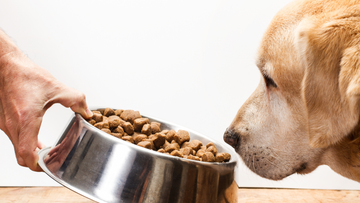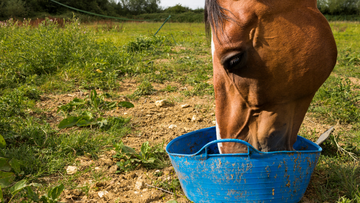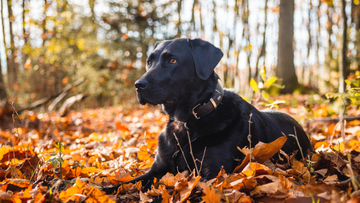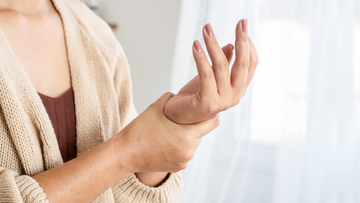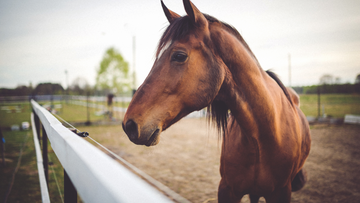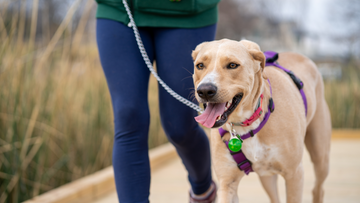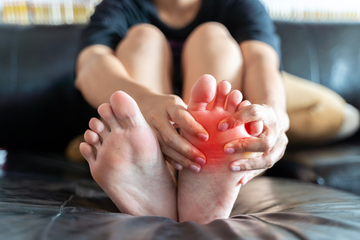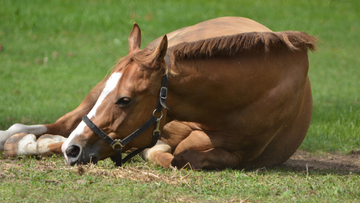What is TMJ?
TMJ is short for Temporomandibular Joint and Muscle Disorder. It's a clinical condition that causes pain and dysfunction in the jaw joint and within muscles that control the jaw movement. The TMJ represents the connection between the upper and lower jaw. There are two TMJ's - one on the right side and one on the left side of the head. These joints are used to open and close the mouth for daily activities such as grazing, etc.
The TMJ allows the horse to move his jaw properly, both for food digestion, but also for overall health and balance in their biomechanics. The TMJ is considered one of the hardest working joints in horses. It includes soft tissue like muscles, ligaments, and cartilage.

The temporal bone is the area of the skull where the ear resides. When the bones are misaligned and not articulating properly the surrounding tissue of the TMJ is stressed. The main cause of TMJ problems many times begins with poor dental care. Having your horse's teeth floated by a vet or certified equine dentist on a regular basis is important (Floating recommendations: for horses under 12 yrs. of age, twice a year | horses over 12 yrs. of age, once a year).
Aside from dentistry, other causes include eating out of raised hay racks, use of harsh bits and/or restrictive nose bands, hard hands when being ridden, emotional stress, and lack of pasture grazing. Various things can contribute to TMJ disorders including bacterial infections, chronic wear and tear, poor teeth, and jaw alignment.
Some symptoms to look for:
- Uneven wear of the teeth
- Head tossing, especially when pressure is applied
- Cribbing
- Ear sensitivity
- Difficulty taking or wearing a bit
- Difficulty with certain leads or gaits
- Difficulty flexing at the poll
- Head shy or sensitive in the jaw area
First you should examine and (hopefully) eliminate certain factors that may be causing the problem such as bits, dental issues, or feeding practices. There are many treatments that can be used to relax the muscles, ligaments, and tendons in the jaw and TMJ area. Massage, acupressure, acupuncture, myofascial release, and cranial-sacral work are just a few. When your horse is behaving in an unnatural manner, don't always assume he or she is being difficult for no reason. Many behavioral issues are often a direct result of an underlying pain and/or medical issue.
Benefab® by Sore No-More® is here to help as we have a few specific products that will help with TMJ problems. The
Therapeutic Poll Pad is an affordable products that targets relaxation in the poll area which helps align the poll, neck and back muscles. Thus, improving overall collection, suppleness and acceptance of the bit. We also offer our
Rejuvenate SmartScrim and
SmartHood combining both ceramic and magnetic therapies. These products increase Oxygen flow and ultimately reduce pain and stiffness in targeted areas. The SmartHood specifically targets the known acupuncture point for the TMJ >>>
check it out here.
 The temporal bone is the area of the skull where the ear resides. When the bones are misaligned and not articulating properly the surrounding tissue of the TMJ is stressed. The main cause of TMJ problems many times begins with poor dental care. Having your horse's teeth floated by a vet or certified equine dentist on a regular basis is important (Floating recommendations: for horses under 12 yrs. of age, twice a year | horses over 12 yrs. of age, once a year).
Aside from dentistry, other causes include eating out of raised hay racks, use of harsh bits and/or restrictive nose bands, hard hands when being ridden, emotional stress, and lack of pasture grazing. Various things can contribute to TMJ disorders including bacterial infections, chronic wear and tear, poor teeth, and jaw alignment.
The temporal bone is the area of the skull where the ear resides. When the bones are misaligned and not articulating properly the surrounding tissue of the TMJ is stressed. The main cause of TMJ problems many times begins with poor dental care. Having your horse's teeth floated by a vet or certified equine dentist on a regular basis is important (Floating recommendations: for horses under 12 yrs. of age, twice a year | horses over 12 yrs. of age, once a year).
Aside from dentistry, other causes include eating out of raised hay racks, use of harsh bits and/or restrictive nose bands, hard hands when being ridden, emotional stress, and lack of pasture grazing. Various things can contribute to TMJ disorders including bacterial infections, chronic wear and tear, poor teeth, and jaw alignment.

